Learn all about the history and real-life inspirations for each Epcot World Showcase pavilion. Check out pictures and details here.
World Showcase Pavilions
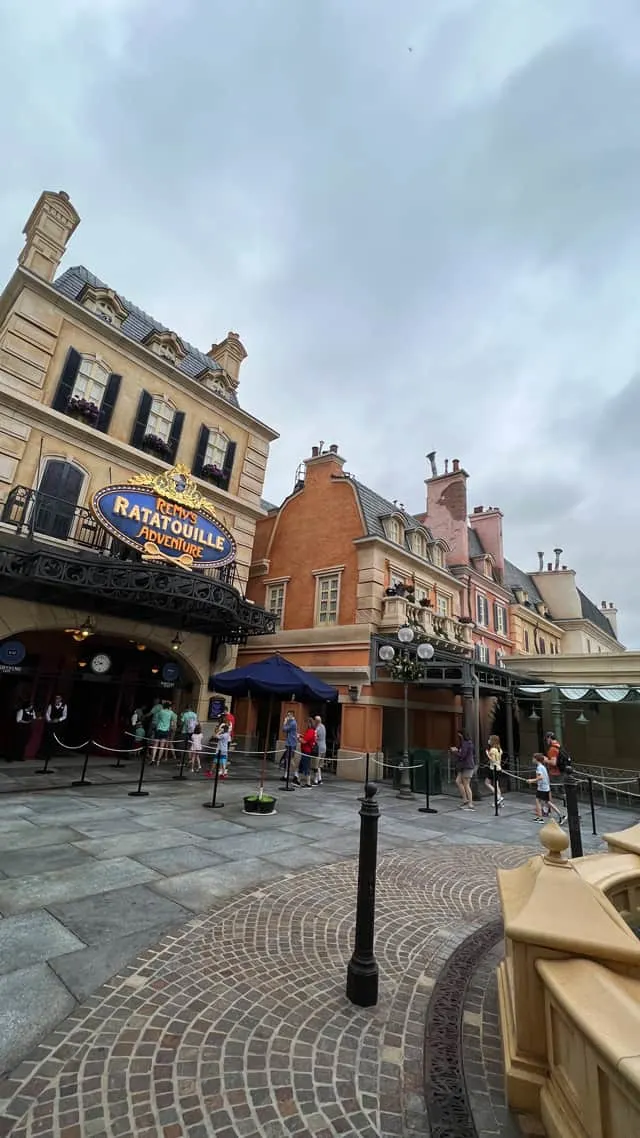
Each of Epcot’s 11 World Showcase themed pavilions were created to represent each country’s landscape, architecture, and marketplaces. I (Susan) love that each pavilion is staffed with cultural representatives from the pavilion’s country. (However, cultural representatives have not returned since re-opening.) If you haven’t done it before, check out the Cast Member’s name tags to show their hometown and country.
Here, we’ll travel around the world to explore influences for each Epcot World Showplace pavilion. There’s some debate if it’s better to travel from left to right, or vice versa. However, we always travel from Mexico to Canada so I hope you enjoy our journey…
Mexico Pavilion: El Castillo Pyramid
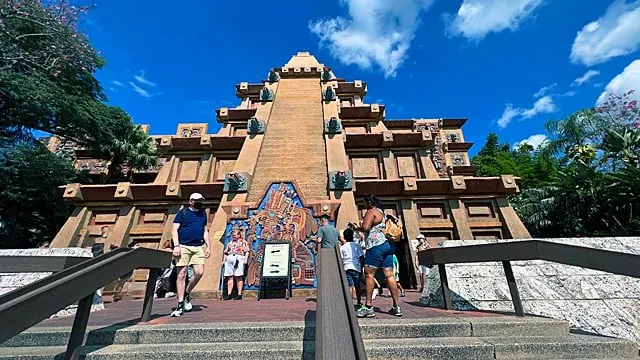
Mexico is one of my very favorite places to relax at Disney World. As I relax in the open-air market, I pretend to be in Mexico, taking in all the sights and sounds. Also, the outside of the Mexico Oavilion is based on architectural designs of ancient Mesoamerican civilization.
The pre-Hispanic city of Chichén Itzá was the most important Maya area. After the Spanish arrived, it became the center of worship in the Yucatan peninsula. One of the most famous temples, El Castillo, was built here between 800 and 1100 A.D.
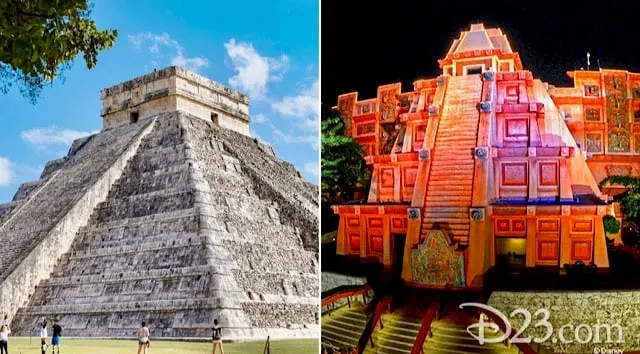
Interestingly, when the spring and fall equinoxes occur in Mexico, a “shadow” of a serpent appears to descend on the pyramid. Disney’s Imagineering added a super cool effect to the pyramid. Each day as the sun goes down, the shadow “snake” also appears in the World Showcase. I can’t wait to witness this on my next visit!
Norway Pavilion: Stave Church

Second, let’s travel to Norway to the stave church. A stave church is a wooden Christian church building common in northwestern Europe and Norway around the 13th century.
The Pavilion’s Stave Church design displays artifacts and shows how Norway’s culture and history strongly influenced Disney’s Frozen movies. However, I prefer the Norway museum-type displays and educational history displays over the Frozen-heavy theming of current Epcot “Stave Church.”
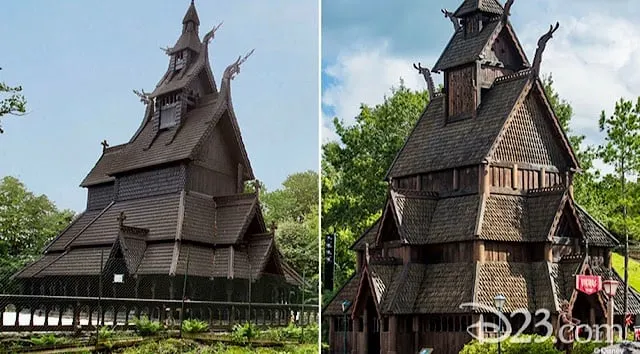
The animated buildings in the Frozen movies also include steep slanted roofs. Cool fact, these deep slants prevent the roofs from collapsing due to the weight of the snow.
China Pavilion: Temple of Heaven

Strolling around the beautiful China gardens and landscape, it’s easy to imagine transforming yourself half way around the world.
In the southeastern part of central Beijing, brilliantly-colored and ornate religious buildings cover the landscape. The round China Pavilion represents The Temple of Heaven. This was built in the early 1400s during the Ming and Qing dynasties.
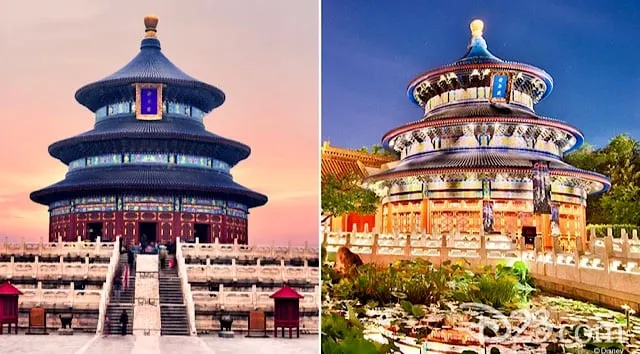
As you first enter the China pavilion, you’ll pass the Gate of the Golden Sun.
Inside the Temple of Heaven guests enjoy the visually stimulating 14-minute Circle-Vision 360° film Reflections of China. This China landmark represents the balance between heaven and earth. In addition, the square base signifies the world while its upper rounded shape evokes a feeling of the unending space of heaven.
Germany Pavilion: St. George and the Dragon Statue
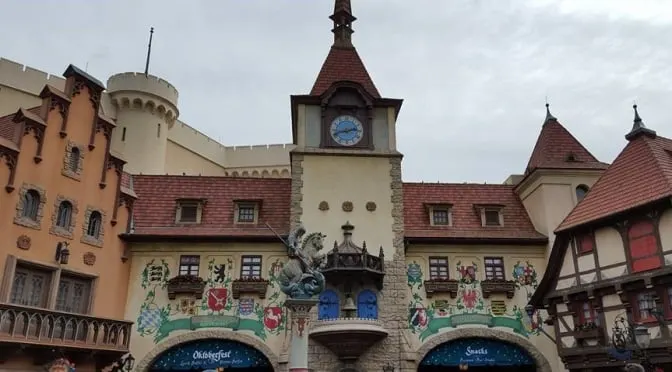
Guests of Germany’s pavilion enter a charming village town square. Situated in the center is a statue of the Patron Saint of Soldiers, Saint George. Disney’s Imagineers modeled this after the Saint George statue located in Rothenburg, Germany.
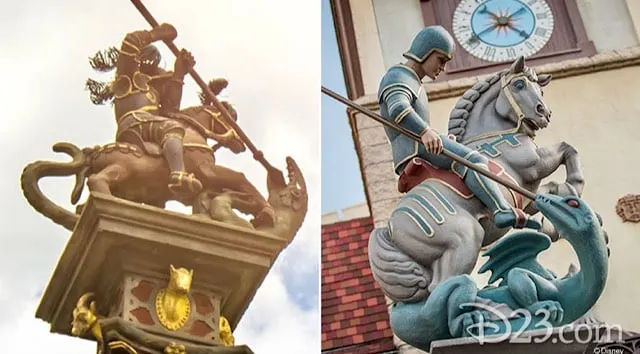
In addition, Saint George is a symbol of protection and is commonly found in German villages. Legend has it there was a dragon victimizing a small kingdom, even taking the king’s daughter prisoner. Saint George bravely fought against and defeated the dragon, saving the kingdom.
Italy Pavilion: St. Mark’s Campanile Bell Tower

Italy’s pavilion also incorporates traditional Italian architecture, food, and shops. At the center of this pavilion is the replica of the St. Mark’s Campanile Bell Tower. Also, on the top of the tower is a golden statue of the Archangel Gabriel.
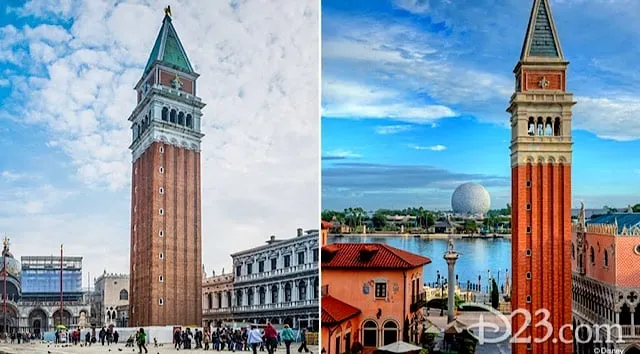
The St. Mark’s Campanile Bell Tower was built in the 9th century. However, in 1902 the tower experienced a sudden collapse that destroyed this landmark. However, Italy rebuilt it using the exact plans and site from the original tower between 1903-1912.
The American Adventure: Independence Hall
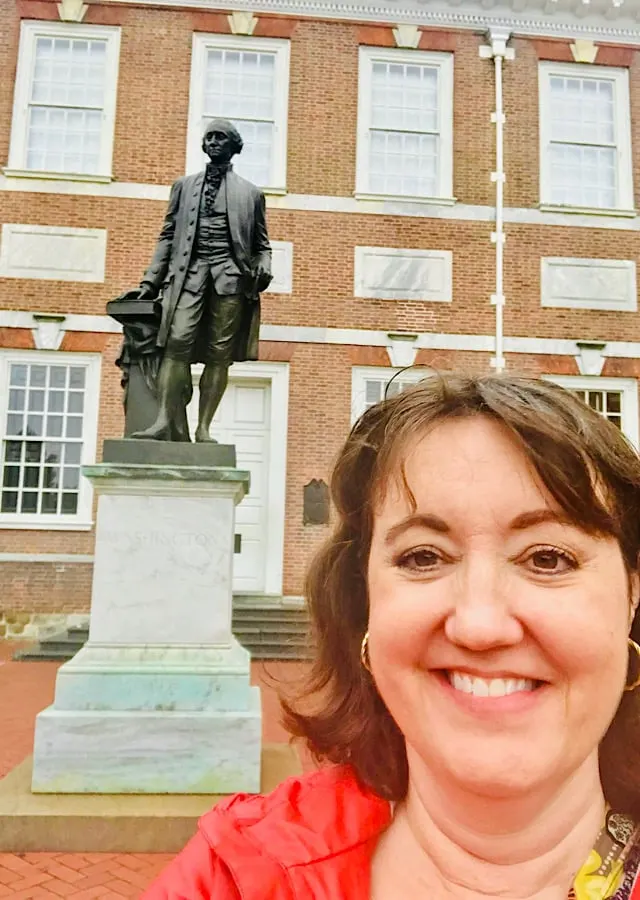
Independence Hall is the only inspired landmark I’ve visited. I highly recommend taking a free tour when visiting Philadelphia. Also, Epcot’s American Adventure was built following the Georgian style of Independence Hall.
In 1776, the Second Continental Congress signed the Declaration of Independence here. Eleven years later, in the same room, delegates to the Constitutional Convention created and signed an enduring framework of government – the United States Constitution.
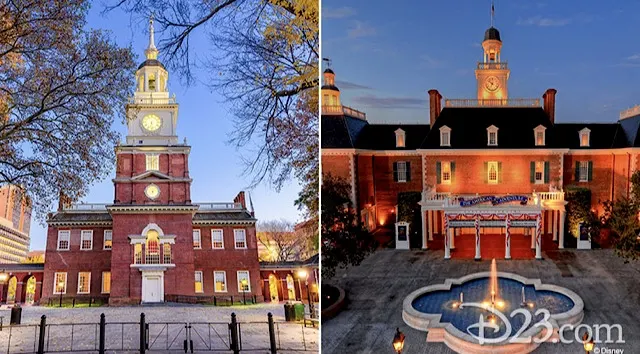
The American Adventure features a prominent steeple and clock tower. It took Disney Imagineers five years to complete The American Adventure pavilion. It’s built with bricks of Georgia red clay aged for a more authentic look.
Japan Pavilion: Torii Gate
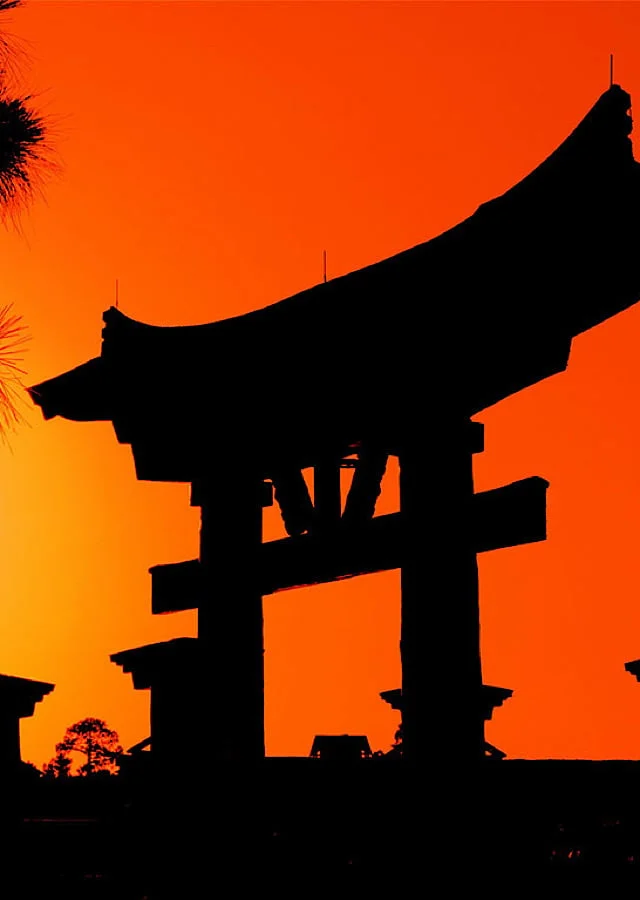
The floating torii of Itsukushima Shrine on Miyajima is among Japan’s best-known landmarks. Located on the water, the torii gate at Epcot invites guests inside the Japan pavilion from the World Showcase Lagoon.
The torii typically marks the entrance to a sacred space and can be seen across Japan in a variety of sizes, from a couple of inches tall to massive structures that span across roads.
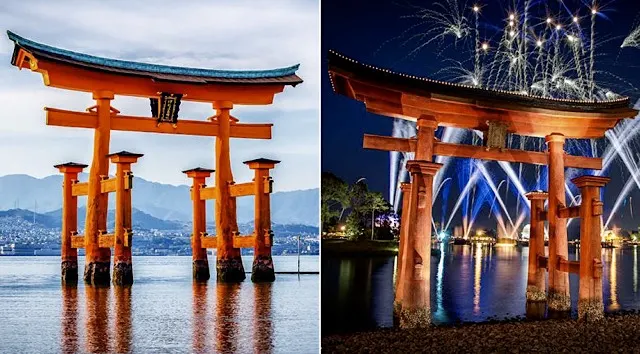
Morocco Pavilion: Koutoubia Minaret
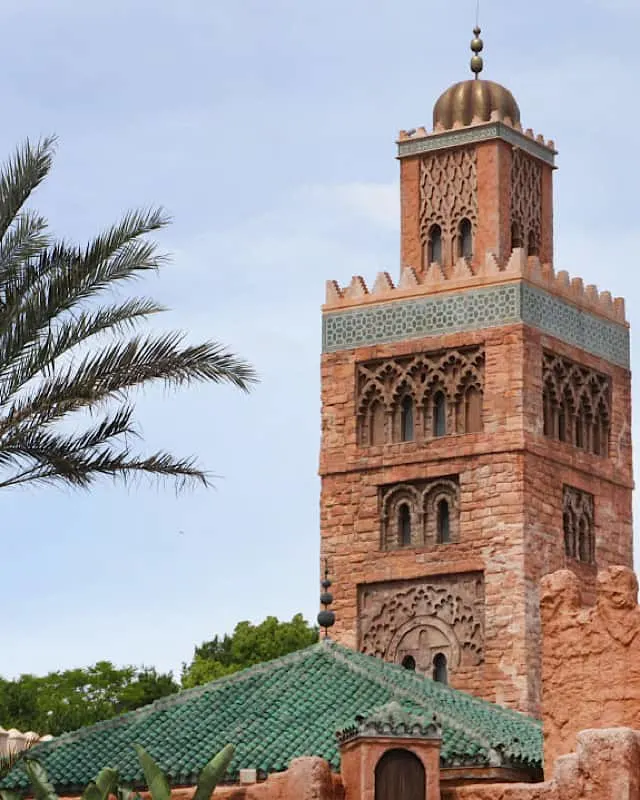
From the narrow paths and markets to the hand-laid breathtaking tile, the Morocco pavilion is an especially immersive experience at World Showcase. Morocco boasts being the only pavilion where the country’s government played an important role in designing the pavilion.
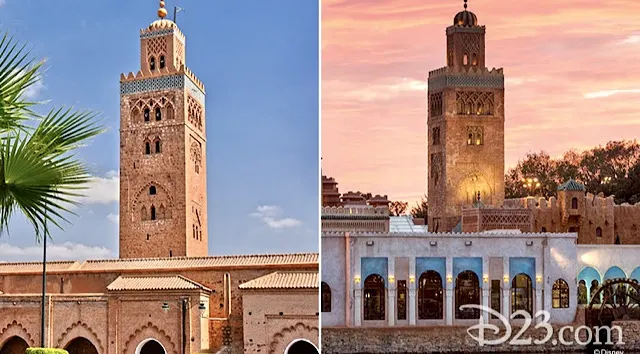
It features the Koutoubia Minaret, a replica of the Koutoubia Mosque in Marrakech, a large mosque in Morocco.
France Pavilion: Eiffel Tower
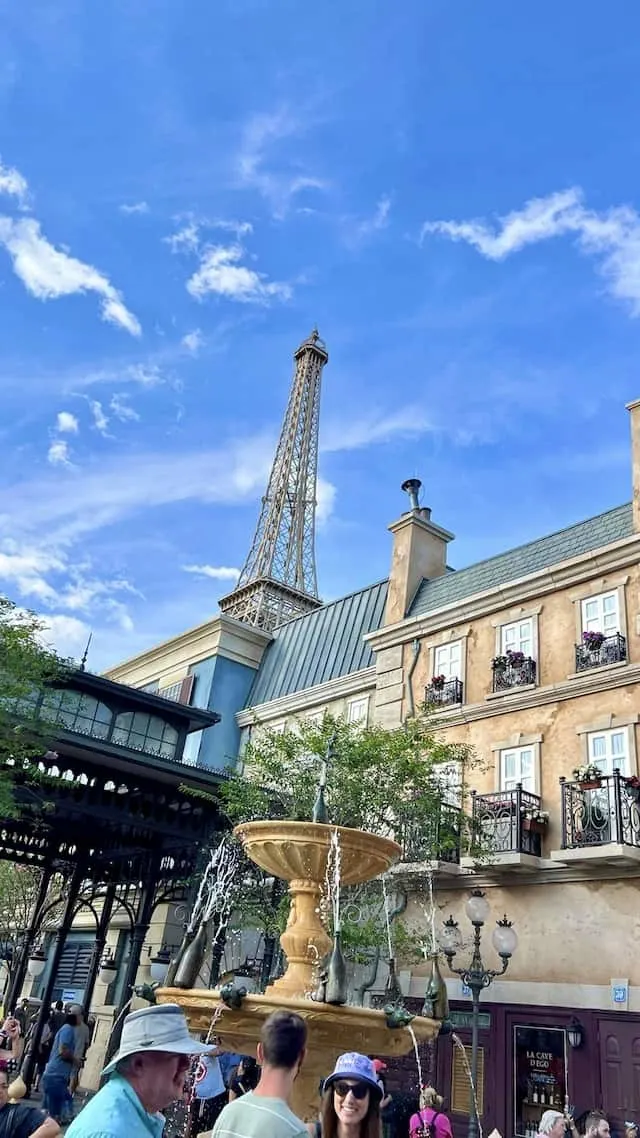
There’s no mistaking the famous Eiffel Tower that stands as a beacon for those entering the France pavilion. The Eiffel Tower is a wrought-iron lattice tower on the Champ de Mars in Paris, France. It is named after the engineer Gustave Eiffel.
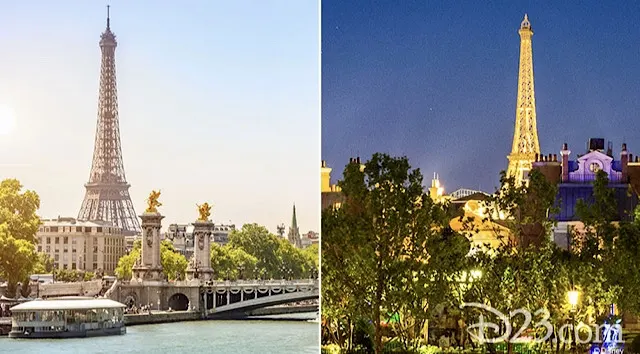
Built as the entrance to the 1889 World’s Fair, it is the most-visited paid monument in the world! Originally, it was built to be displayed for only 20 years. However, it still stands over 100 years later as a literal beacon of light for both visitors and locals to enjoy!
United Kingdom Pavilion: Tudor Pub
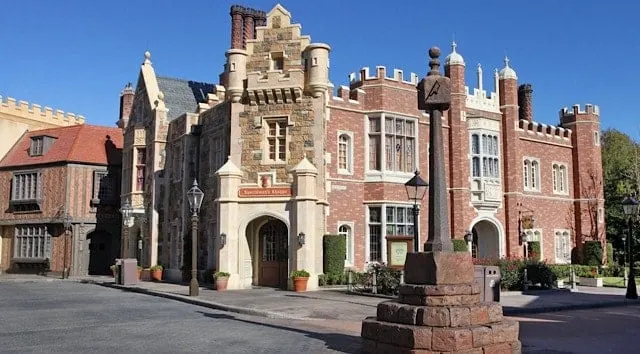
While many of the World Showcase pavilions are inspired by a specific landmark, United Kingdom gets its design from experiencing the English countryside. Some of my favorite shops are located here.
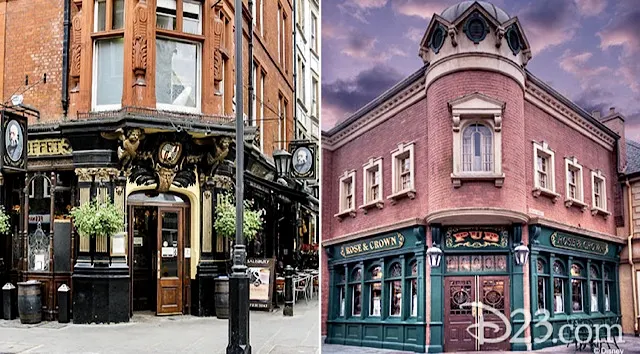
The United Kingdom Pavilion includes red phone booths, English gardens, and a cobblestone street. Rather than following a specific style of architecture, guests experience various times of British architecture.
The Rose and Crown restaurant is styled after a traditional Tudor Pub.
Canada Pavilion: Chateau Laurier
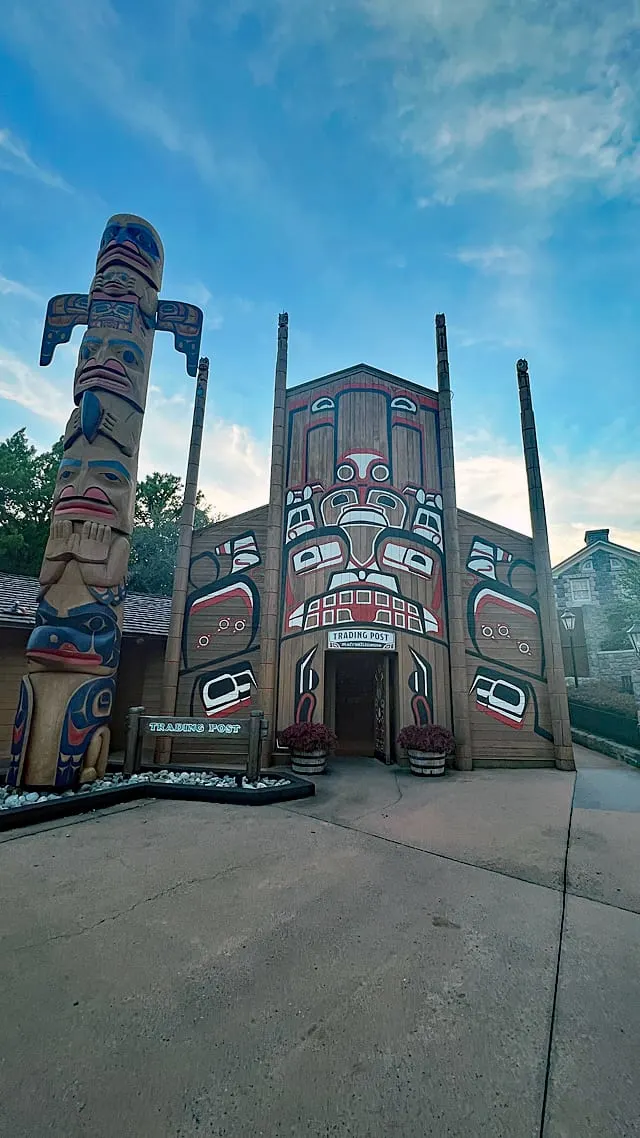
The natural wonders of Canada, including the Rocky Mountains, a 30-foot waterfall, and lavish gardens can be found at the Canada pavilion. There is a small shop with a giant totem pole guarding it representing the more rugged side of Canada also.
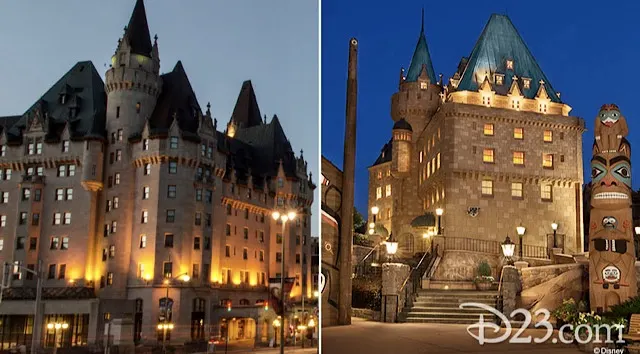
One of the most eye-catching elements is the the Hotel du Canada, inspired by the Chateau Laurier in Ottawa. The hotel was built by railroad president, Charles Melville Hays between 1909 – 1912. Chateau Laurier interior was lavishly furnished. Its exterior features Italian marble, Indiana limestone, and a copper roof. The hotel became a National Historic Site of Canada in 1981, and still serves guests today!
I hope you enjoy reading about the World Showcase pavilion inspirations as much as I’ve enjoyed writing about them! Please check out all these fantastic details on your next trip to Epcot.
Do you have a favorite World Showcase pavilion, or have you visited any of the inspired sites? Please let us know on our Facebook page
Source: D23.com
Discover more from KennythePirate.com
Subscribe to get the latest posts sent to your email.



What do you think?